A 5 ingredient, Easy Whole Wheat Bread recipe with very minimal hands-on time & no special ingredients needed. It's soft, fluffy, crusty, completely sugar-free, & unbelievably good! Perfect for beginners.

💌 SAVE THIS RECIPE!
Watch out for more tasty treats coming your way too! Unsubscribe at any time.
FEATURED COMMENT
"It’s the best bread recipe I’ve ever made!!! It’s going to be my go to recipe...The crumb is perfect and it rose way over the rim of my large loaf pan to a golden brown crust. " - Michelle ⭐️⭐️⭐️⭐️⭐️ More reviews →
Jump to:
Imagine this... The smell of Whole Wheat Bread fills the air as it bakes in your oven. Breaking off a piece of that crust while it's still hot, slathering it in the most delicious Easy Vegan Butter. Devouring it.
Well guess what? I have some really good news. This could be you in just a couple of hours.
Now before panic sets in, bread and yeast does not have to be scary. So many people are daunted by it and it's such a shame because baking bread and eating the result, is one of life's true pleasures and it really isn't difficult.
There really is nothing better than tucking into a loaf of warm, freshly baked bread that you, yes YOU, made all by yourself!
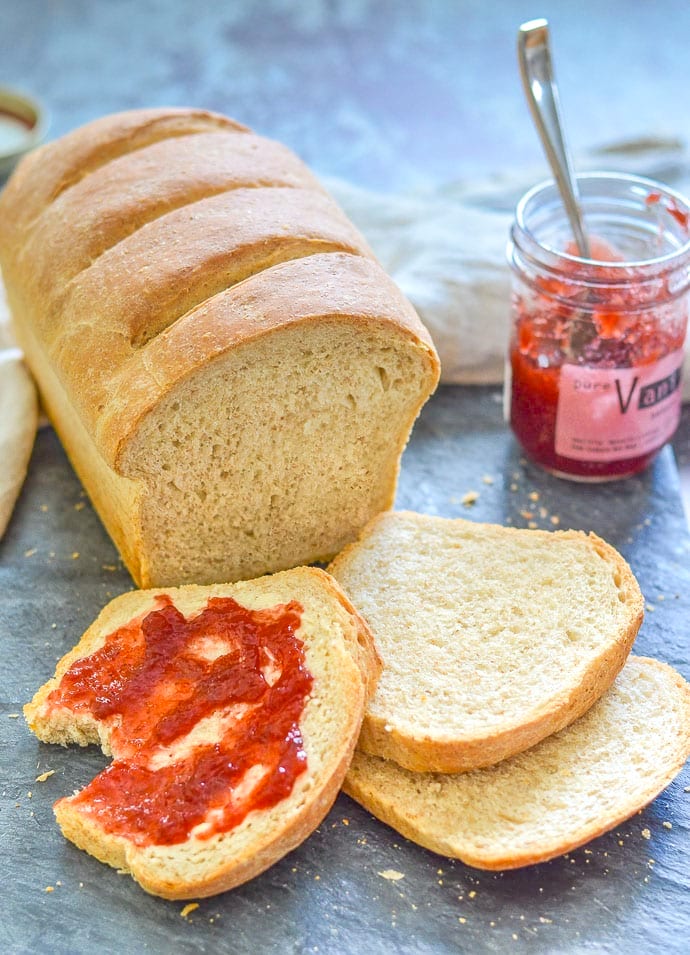
So many of you have made my No Knead Focaccia Bread and everyone starts off being sceptical of it. They think it can't possibly work because it is so incredibly easy. But it does. Every. Single. Time.
This Easy Whole Wheat Bread is a little step up from that, in that it takes a little more effort. But it's really not much more especially if you own a stand mixer.
But, if you don't have a stand mixer, don't worry because you can knead the dough by hand and get exactly the same result. You just need to use a bit more elbow grease! Think of the extra calories you will burn. That equals more bread that you can eat!
This is why I am loving this Easy Whole Wheat Bread:
- Hands on time is minimal.
- It's light, fluffy and soft with a lovely crusty crust.
- The flavour is mild and nutty and it doesn't taste too 'whole wheaty'.
- It only has 5 ingredients and is completely sugar free.
- You won't find any additives or dough conditioners like in store-bought bread.
- It keeps well for a few days.
- You can double up the recipe and freeze one loaf for another day.
- It makes the best sandwiches, toast and soup or stew accompaniment!
Success Tip - I bake bread 2 or 3 times every week and have tried many, many loaf pans. My favorite by far are the ones from USA Pan. Even after years of constant use loaves and cakes never stick. I wipe a tiny bit of oil over the surface with kitchen paper and whatever I am baking slides right out so easily.
How To Make Whole Wheat Bread
Here's a quick run through of how to make your own homemade whole wheat bread:
1 - In a bowl combine flour, yeast, salt, olive oil, and water.
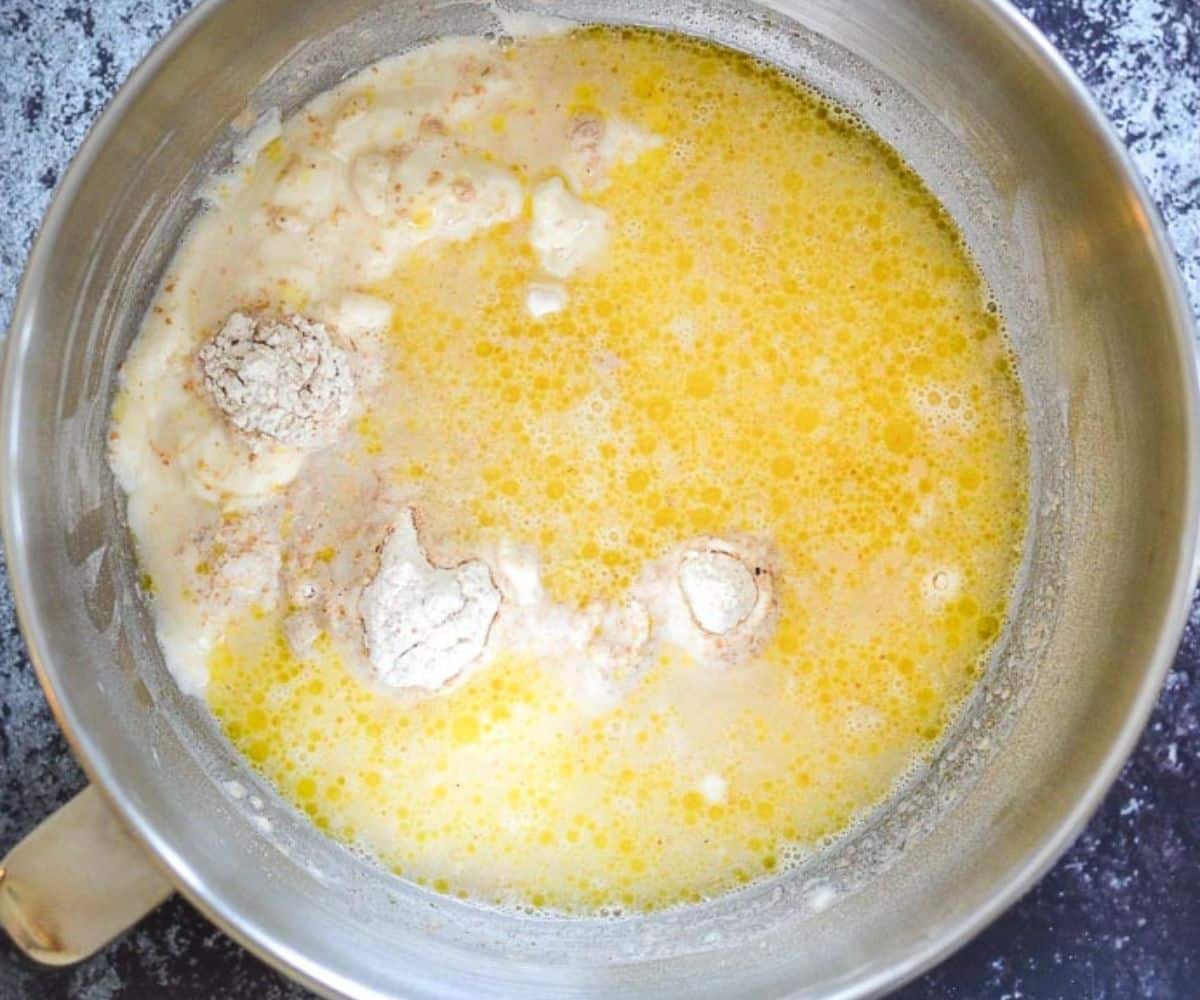
2 - Mix together then knead either by hand for about 10 minutes, or use a stand mixer.
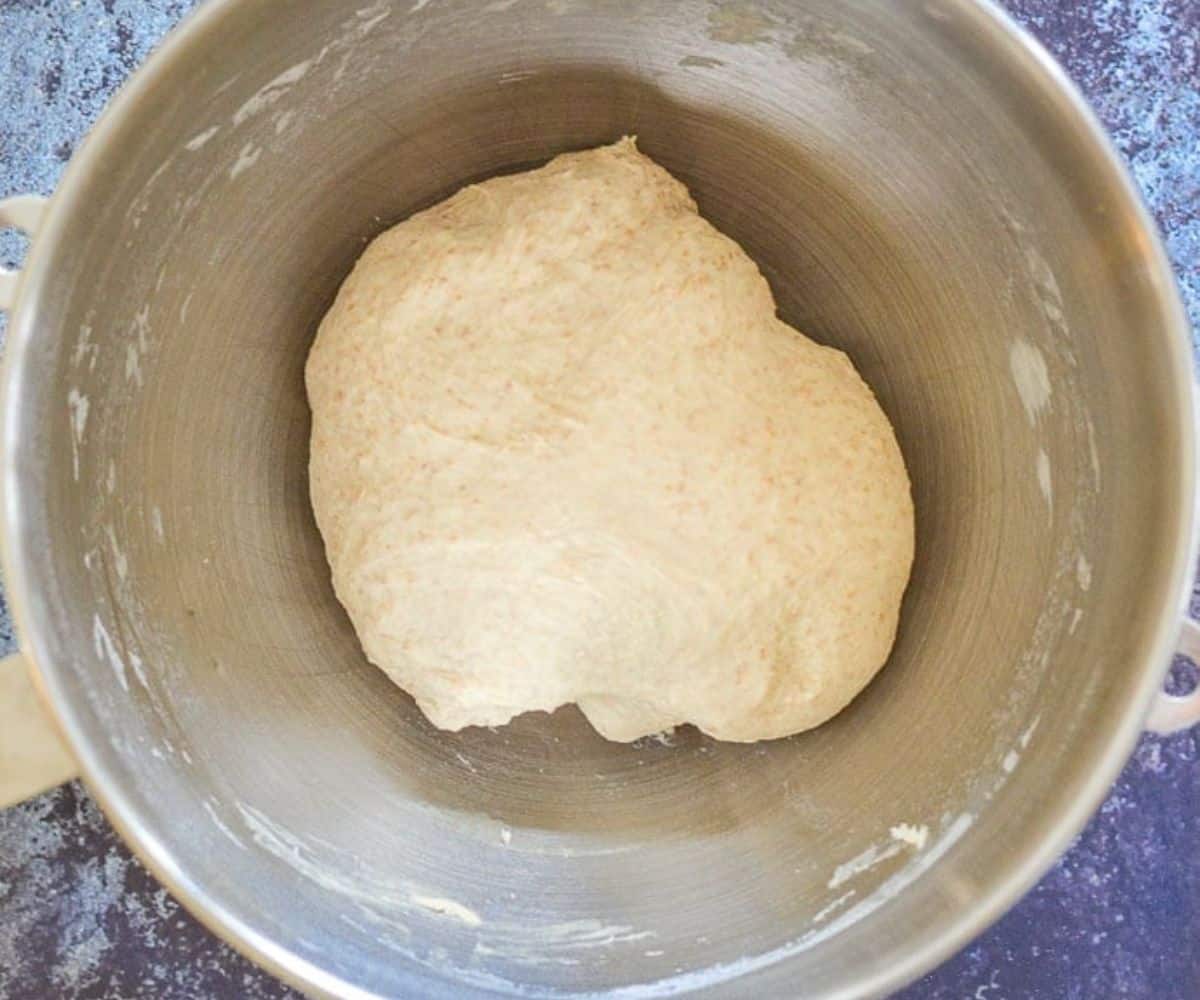
3 - Lightly grease a bowl and leave the dough to double in size (it will take around 60-90 mins depending on the temperature of your kitchen).

4 - Shape the loaf and place into the pan.
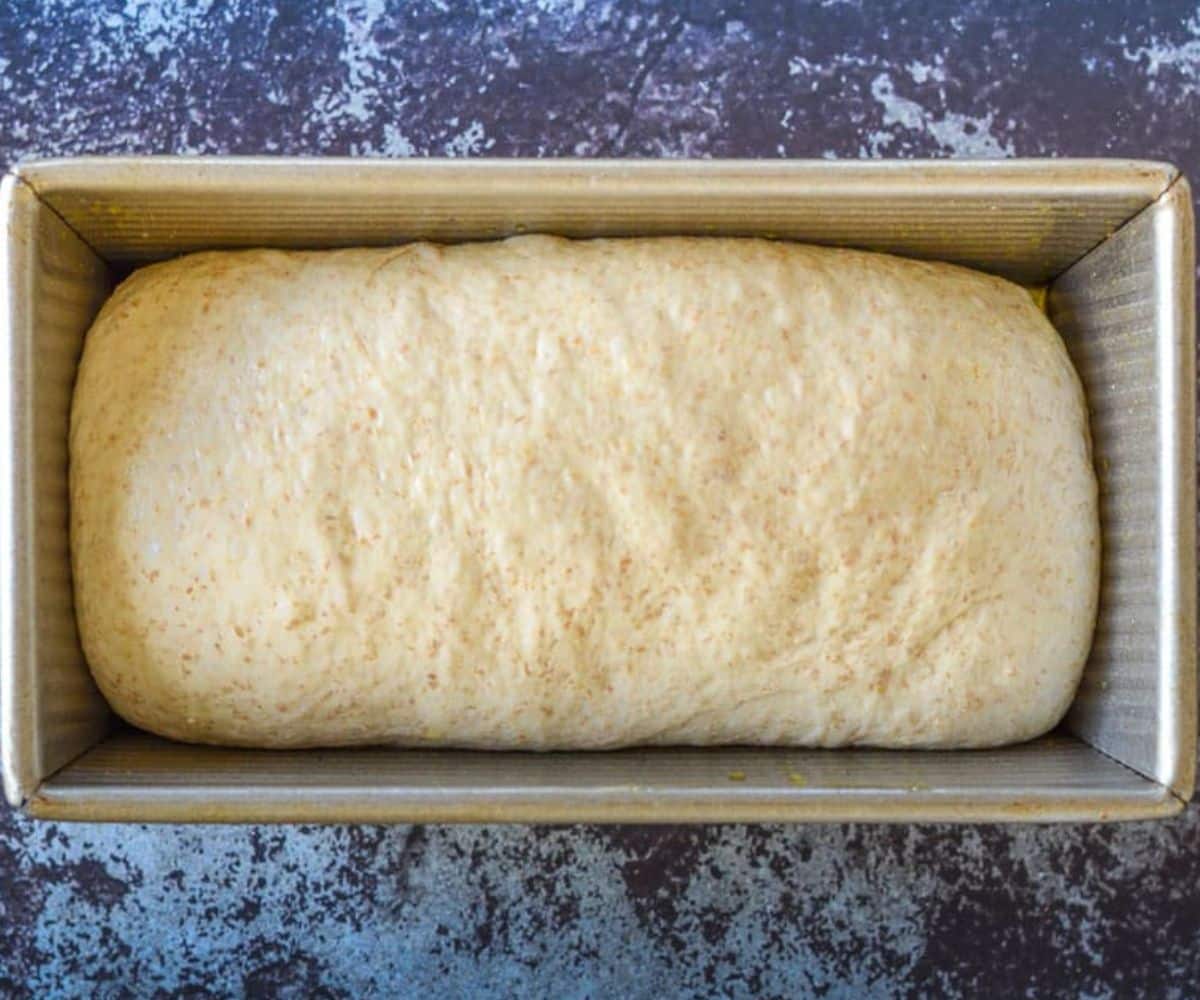
5 - Leave until risen to about 1 inch above the top of the pan.
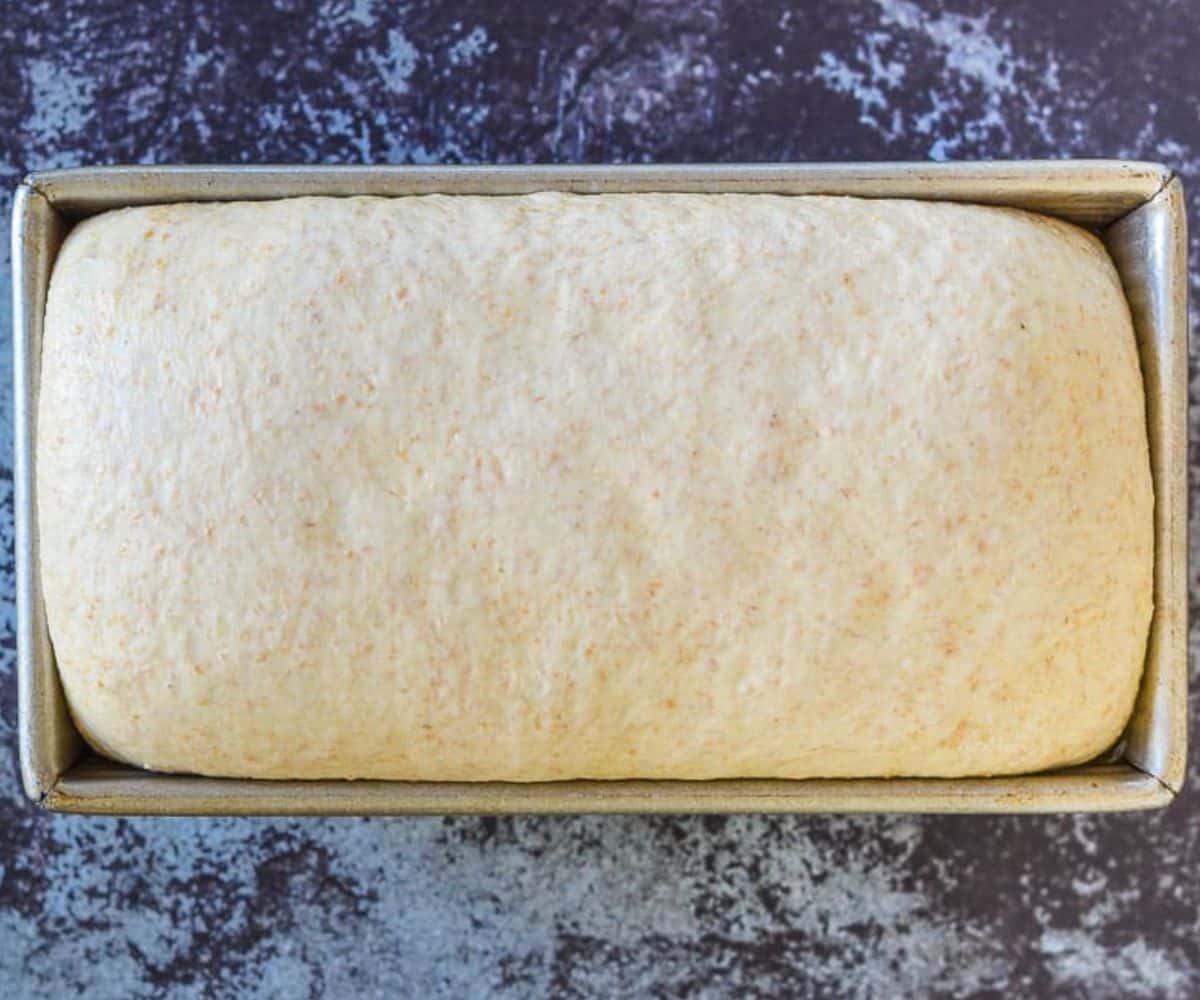
6 - Score, then bake! You can do one long cut all the way down the length of the loaf or a few horizontal ones. You can bake it without scoring if you want to but then your bread will decide where its weak spot is and probably bust open as it expands. It will still taste good but might end up a bit misshapen. By scoring it you providing it with a weak spot to expand from and your loaf will look much prettier.
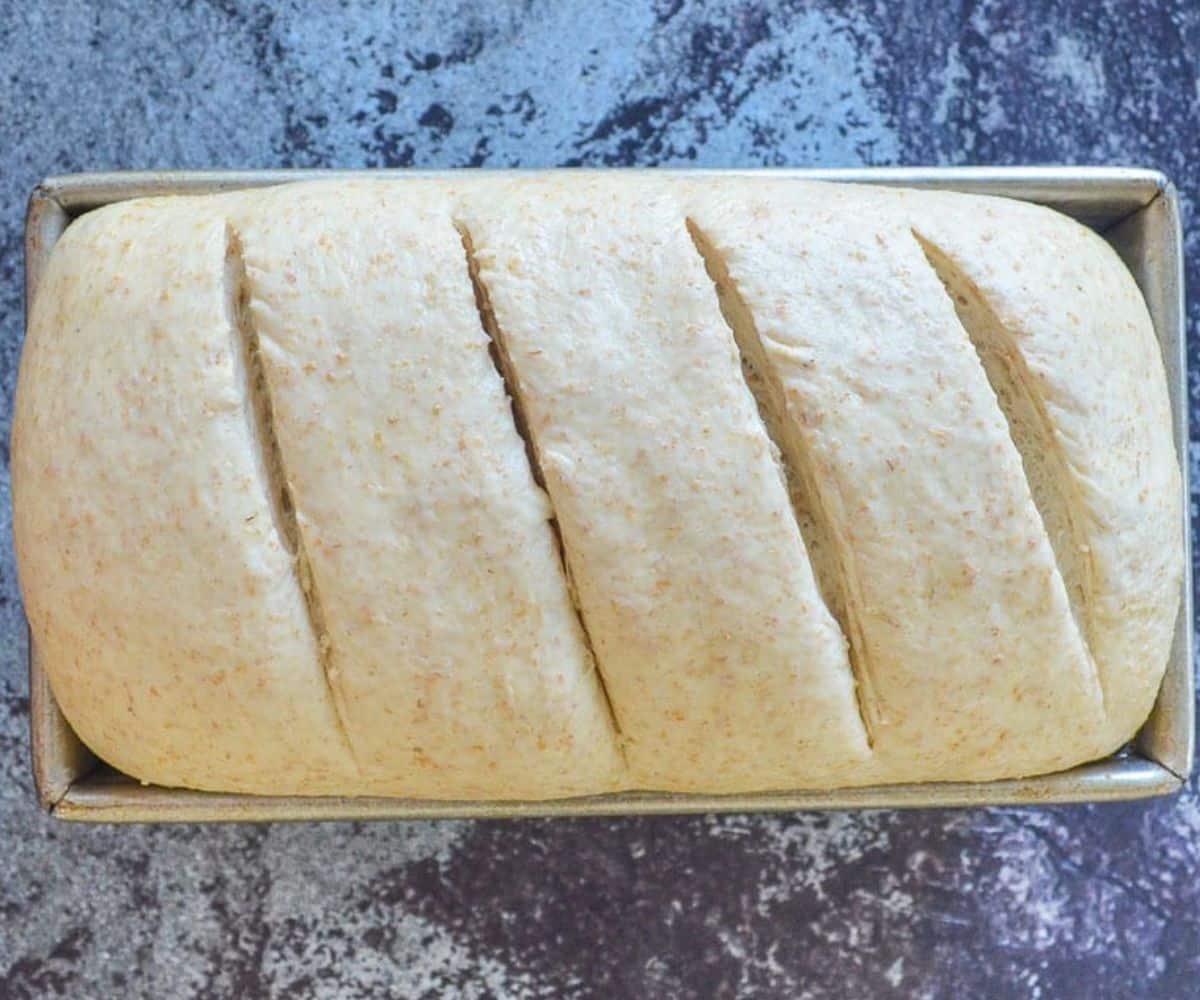
Success Tip -As with all of my baking recipes, where precision is key to excellent results, I highly recommend using a kitchen scale to measure your ingredients, rather than using cup measurements. I love this one because it is very reasonably priced and it has a tare function which is really handy. It means you can place any bowl on the scale and reset to zero so it doesn’t include the weight in its the calculation, plus you can reset to zero when adding multiple ingredients to the same bowl which saves on washing up.
Why This Loaf Is Perfect For Beginners
I call this loaf a Light Whole Wheat Bread because it uses a combination of white flour and whole wheat flour. By doing this you get a much softer, lighter loaf, it's way easier to handle, and there isn't such a learning curve.
It's a great beginner's easy whole wheat bread because of this. If you use a greater ratio of whole wheat flour your loaf won't be as light and fluffy, especially if you're a bread-baking novice.
By making lighter whole wheat bread, it becomes more family-friendly too. Children don't tend to like the taste of 100% whole wheat bread but this one is much milder in flavour and I have never had any problems getting my son to eat it.
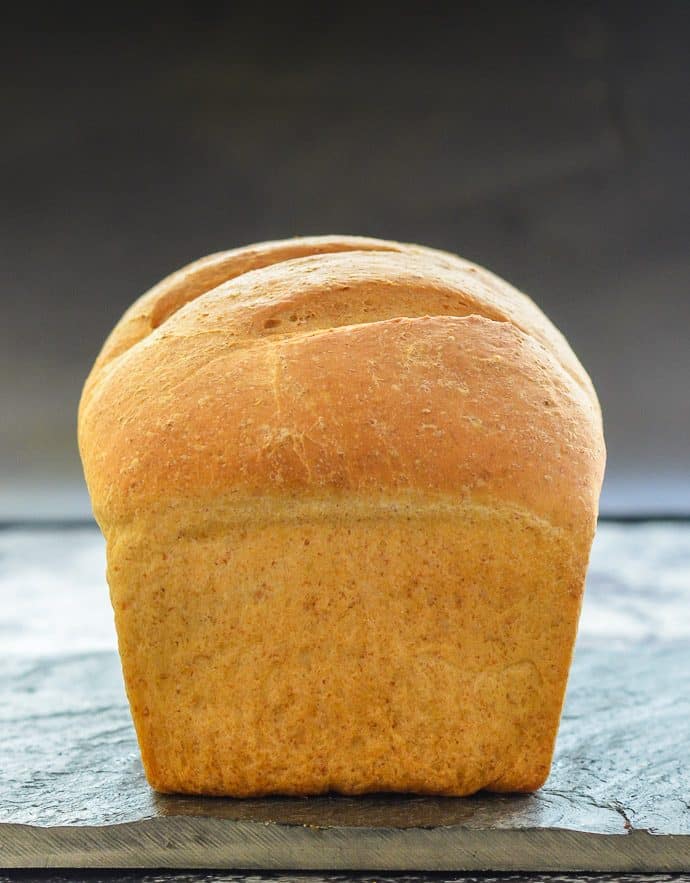
Increasing The Percentage Of Wholewheat Flour
Perfect your making of this bread recipe as written, then if you want to, feel free to slowly increase the percentage of wholewheat flour as you become more experienced.
You can increase it as much as you need to suit your taste or dietary preferences. Bear in mind that you will need to increase the amount of water slightly as the amount of wholewheat flour increases. It will be by about 1 tablespoon (15ml) of extra water per extra cup (133 grams) of wholewheat flour that you use.
Storing Bread
Store in an airtight container or plastic bag for up to 3 days. After that time it will still be ok for toast. This bread also freezes well sliced or unsliced for up to 3 months. Bread will stay fresher for longer if you wait until it is completely cool before slicing into it.
Recipe FAQs
Despite the common myth, the addition of sugar to bread dough is not necessary. There are enough natural sugars in the flour to feed the yeast and get a good result. That is why I do not include any in this recipe.
You can omit the oil from this recipe but bear in mind that oil or vegan butter makes the crumb softer and also acts as a preservative. If you don't add any your bread will be crustier and it won't keep as long before going stale.
It's so easy to make that there's really no need, but you absolutely can if you want to. As long as it physically fits that is. Bread-maker pan sizes are all different and a lot are pretty small. Much smaller than a standard loaf pan. So you might need to scale the recipe down to fit. This recipe will work fine if reduced by ¼, ⅓, or ½. Just make sure you're accurate with your calculations and use whatever the regular basic loaf setting is on your machine.
Recipe
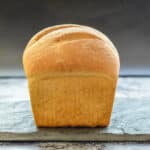
Easy Whole Wheat Bread
Author:WATCH HOW TO MAKE IT
Ingredients
- 300g (2⅓ cups) all-purpose white flour or bread flour , (strong flour in the UK)
- 200g (1½ cups) wholewheat flour , (strong wholemeal flour in the UK)
- 10 grams (1 tablespoon) instant yeast or quick rise yeast
- 2 teaspoons fine sea salt
- 3 tablespoons olive oil , or any other neutral oil
- About 310mls (1⅓ cups) warm water , or cold water if you want it to take longer to rise.
RECOMMENDED EQUIPMENT
INSTRUCTIONS
- To a large bowl or stand mixer add both flours, the yeast, and the salt.
- Add the olive oil and the water. Turn on the stand mixer and knead the dough for 7 minutes. My Kitchen Aid manual recommends speed 2 for bread dough. You might need to stop the machine after a couple of minutes and scrape down the sides if it isn't catching all of the flour as it kneads. If it feels a little dry add a few drops more water. Add it very gradually though so you don't accidentally add too much. It should feel slightly tacky but not wet. If you are working by hand, stir the ingredients together with a spatula until a rough dough is made, then turn out onto a clean surface. Don't flour the surface. Instead rub some olive oil on it and on your hands. It will stop any sticking and means there is no chance of you adding too much extra flour which will affect the texture of your bread, making it dry and heavy. Knead for 10 to 15 minutes, until the dough is smooth, elastic. When you squeeze the ball of dough between both of your hands, it should bounce back. If you are unsure how to knead I recommend watching this video to help you perfect your technique.
- Once kneaded, grease a large bowl with a little oil, then put the kneaded dough in it and move it around to coat all over in a light coat of oil.
- Cover with a damp, clean dish towel ( I run mine under the tap for a minute then wring it out), and leave on the kitchen counter until doubled in size. The time this takes will vary depending on how warm your kitchen is, but bear in mind that the longer it takes to rise, the more flavor there will be in your finished loaf, so unless you are in a hurry, don’t rush it by cranking up the heat or putting it somewhere very warm. Mine generally takes between 60 - 90 minutes to double in a 20°C kitchen.
- Once the dough has doubled, scrape it gently onto a clean, lightly oiled work surface.Try not to tear it. Use the heels of your hands to flatten it into a rectangle roughly the width of your bread pan.
- Fold the bottom third up and use the heel of your hand to push it down and seal it a bit. Then fold the top third down and push it down to seal it again. Then fold the dough in half again and pinch closed. Watch my video to see these steps. Gently turn under the ends if they look a little untidy then gently place in a lightly oiled bread pan. It will fit well into an 8.5 by 4.5 inch pan or a 9 x 5 inch pan.
- Rub a tiny bit of oil over the surface of the dough to stop sticking, then cover again with the damp dish towel and leave again until the bread dough is nicely domed and about 1 inch above the sides of the pan. It won't take as long this time. In my kitchen about 30 minutes.
- While you are waiting for your loaf to rise preheat your oven to 400° F (200°C).
- Once risen score the top of the loaf with a lame or very sharp knife. A serrated knife works well. If you've got kitchen scissors you can even cut it with those (you can do one long cut all the way down the middle, or several along the width). You can bake it without scoring but accept that the bread will then decide itself where the weak point is and it might split and look a bit unsymetrical and ugly.
- Place in the preheated oven and bake for 40 minutes. Slide out of the pan and cool on a cooling rack. You can check it's ready by tapping the loaf on the bottom with your fist as if you are knocking on a door. It should sound hollow.
- As hard as it is to resist eating it when fresh out of the oven it really is best to leave it to cool completely before cutting. Cutting while still warm affects the crumb and it will stale more quickly because the cut lets the steam out. You can solve this problem by doubling the recipe and making two loaves. One for eating while warm and one for later!
NOTES
💌 SAVE THIS RECIPE!
Watch out for more tasty treats coming your way too! Unsubscribe at any time.

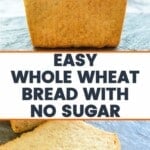
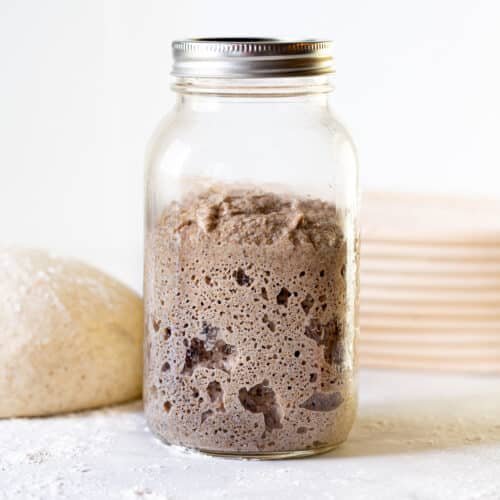


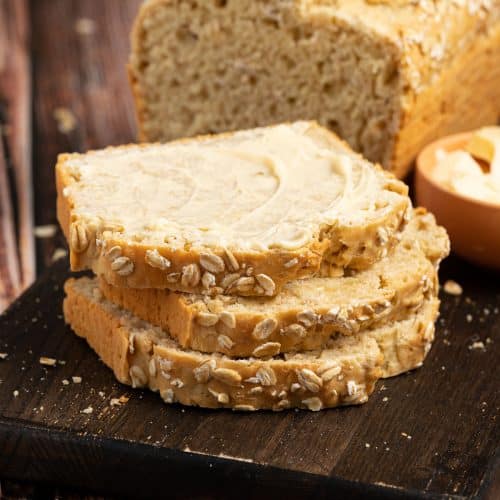
alice says
It was my first time making bread at home - made a perfect magnificent loaf of bread, will keep making this!!!
Melanie McDonald says
That's great Alice - Well done! There'll be no stopping you now!
Gill says
Does this recipe work with gluten free flour please?
Melanie McDonald says
I've never tried but I doubt it. You would be much better off looking for an already gluten-free recipe to try rather than risking a failure with this one.